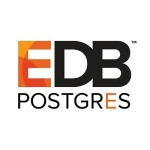It's a good product for Oracle management and monitoring. This solution is deployed on-premises, and we are using the latest version.
The most valuable feature is the monitoring because it's very useful for checking and troubleshooting compared with other products, like Nagios for example, that have some interaction with Oracle. Enterprise Manager is good for a DB administrator to troubleshoot and check monitoring.
The interface could be more friendly for basic users.
I have been using this solution for one year.
I haven't used Oracle technical support for this product. But we have used them for other products, like Oracle Server or Oracle Appliance, for example. For Oracle Appliance, I don't have good feedback because recently we had some issues with Exadata, and they were taking too much time with giving us a solution, so the case was still open for weeks.
Technical support is responsive, but the problem is that there are some other customers that we are managing, and there is not good feedback because every now and then, there are issues for which we open a case, and the same issues are continuously appearing. We are experiencing issues with the same hardware, and we never get a fix.
This is for Oracle Private Cloud Appliance and for Oracle Exadata. For Oracle software, we have good feedback about the quality of the support. But as far as the hardware, I cannot say the same.
Setup wasn't very complex, but usually Oracle products are not easy to install. It's normal for there to be some complexity because Oracle products are not "plug and play" like other products.
For monitoring issues, I compared Oracle Enterprise Manager to Nagios. There was a monitoring need that Nagios could not provide but Enterprise Manager could.
I would rate this solution 8 out of 10.













